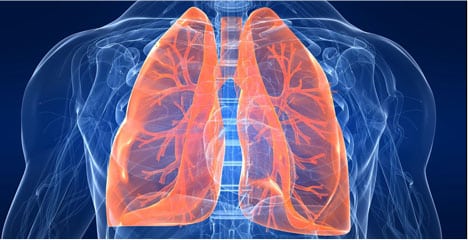What is respiratory acidosis?
Respiratory acidosis is a serious condition which occurs when your lungs is unable to remove enough carbon dioxide. Carbon dioxide is produced continuously as your cells respire. If the lungs cannot remove enough carbon dioxide via alveolar ventilation, it will accumulate quickly in the body. Too much carbon dioxide in the body reduces the pH of the blood and other fluids. This causes the blood and bodily fluids to become too acidic, a condition which is commonly referred to as acidosis. Normal pH level of the blood should be between 7.35 and 7.45. If your blood pH goes under 7.35, you have acidosis.
Normally, your lungs and kidneys work together to balance the blood’s pH. When your blood pH falls to an acidic level, your brain will signal your body to breathe faster and deeper, so as to exhale more carbon dioxide. However, if the body keeps producing excess acid, this process can lead to severe respiratory acidosis. If left untreated, severe respiratory acidosis can lead to respiratory failure, heart problems, or coma.
There are 2 main forms of respiratory acidosis: acute respiratory acidosis and chronic respiratory acidosis. Acute respiratory acidosis usually occurs fast and requires emergency treatment. If this condition is left untreated, it can get worse leading to fatal consequences. On the other hand, chronic respiratory acidosis usually takes time to develop. Instead, the kidney produces more bicarbonate, so as to maintain a normal pH.
Respiratory acidosis signs and symptoms
Signs and symptoms of chronic respiratory acidosis may not be as noticeable at first. Acute respiratory acidosis will produce the following signs and symptoms:
- Confusion;
- Stupor;
- Muscle jerking;
- Drowsiness.
The signs and symptoms of chronic acidosis may be overlooked due to a long-term illness. These would include:
- Sleep disturbances;
- Memory loss;
- Personality change.
Causes
The lungs are responsible for removing carbon dioxide when you exhale, while the kidneys remove acids via urine. Respiratory acidosis usually occurs as a result of lung disease that can affect the normal breathing or affects lungs’ ability to normally excrete carbon dioxide.
The following are the common causes of chronic respiratory acidosis:
- Scoliosis;
- Asthma;
- Chronic obstructive pulmonary disease (COPD);
- Neuromuscular disorders;
- Acute pulmonary edema;
- Severe obesity.
The following are the main causes of acute respiratory acidosis:
- Cardiac arrest;
- Lung disorders;
- Sedative overdose;
- Obstructed airways;
- Medical conditions that affect breathing rate.
Treatment
Before the treatment for respiratory acidosis can begin, diagnosis has to be undertaken. The aim of diagnosis tests is to determine the cause of the pH imbalance, if it is not balanced. Your doctor may perform a blood gas measurement test to measure carbon dioxide and oxygen in your blood. If there is high level of carbon dioxide in the blood, it could indicate that you have acidosis. Electrolyte tests can be performed to check the levels of ions such as potassium, sodium, and bicarbonate. Chest X-rays could help your doctor identify possible injuries that could cause acidosis. If you are diagnosed with acute respiratory acidosis, treatment would involve addressing the underlying problem such as clearing the airway. Artificial ventilation may also be used. If you have chronic respiratory acidosis, you may be given antibiotics to treat infections, corticosteroids to reduce the inflammation, diuretics, or mechanical ventilation.
—
Disclaimer: Please note that the contents of this community article are strictly for informational purposes and should not be considered as medical advice. This article, and other community articles, are not written or reviewed for medical validity by Canadian Insulin or its staff. All views and opinions expressed by the contributing authors are not endorsed by Canadian Insulin. Always consult a medical professional for medical advice, diagnosis, and treatment.


